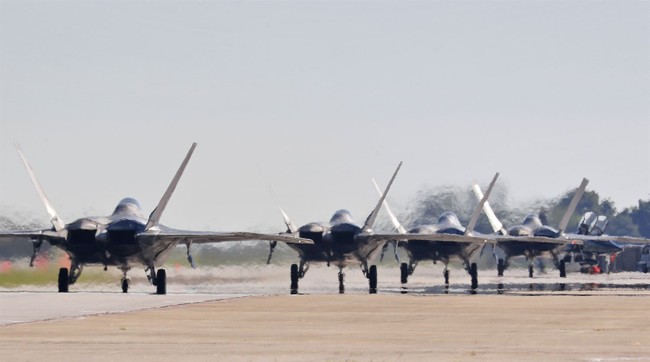The article examines Shield AI’s X-BAT, an AI-piloted vertical takeoff fighter, and how it could blunt an opponent’s ability to strike first by operating from improvised sites, surviving guided-missile threat environments and thinking on its own using an autonomy suite called Hivemind.
The X-BAT is presented as a response to decades-old tactics and recent missile developments aimed at keeping U.S. airpower on the ground. The piece traces the logic back to World War II: if an enemy’s best aircraft are dangerous in the air, hit them while they are vulnerable on the ground. That approach now meets modern cruise missiles and long-range precision weapons designed to neutralize runways and carriers before jets ever launch.
Shield AI’s claim is straightforward: build a jet that does not need a long runway, GPS or constant data links, and let it make many of its own decisions in contested environments. It’s described as an aircraft that can take off vertically, reach high altitude and cover thousands of nautical miles, all while relying on onboard autonomy to navigate and engage. That autonomy, Hivemind, is supposed to read the battlespace and adapt in real time.
“The People’s Liberation Army (PLA) has spent years building an arsenal of long-range precision missiles — including “carrier killers” like the DF-21D and DF-26 — capable of destroying U.S. aircraft carriers and striking American airfields across the Pacific. The goal: keep U.S. air power out of range before it can even launch.”
“Now, a U.S. defense technology firm says it has built a way to fight back. Shield AI, based in San Diego, has unveiled a new AI-piloted fighter jet designed to operate without runways, without GPS, and without constant communication links — an aircraft that can think, fly and fight on its own.”
If the capabilities advertised are real, X-BAT could change operational thinking. An aircraft that launches from ships, small islands or improvised strips would complicate an adversary’s targeting problem. Instead of a few valuable airbases or carriers to hold at risk, a defender could disperse airpower and make preemptive strikes far less decisive.
“Shield AI says the jet, called X-BAT, can take off vertically, reach 50,000 feet, fly more than 2,000 nautical miles, and execute strike or air defense missions using an onboard autonomy system known as Hivemind. It’s designed to operate from ships, small islands or improvised sites — places where traditional jets can’t. The aircraft’s dash speed remains classified.”
“China has built this anti-access aerial denial bubble that holds our runways at risk,” said Armor Harris, Shield AI’s senior vice president of aircraft engineering, in an interview with Fox News. “They’ve basically said, ‘We’re not going to compete stealth-on-stealth in the air — we’ll target your aircraft before they even get off the ground.’”
That quote captures the strategic problem: adversaries are investing in long-range missiles that can make fixed runways and concentrated forces into high-value targets. The response is not only more missiles but smarter ways to launch and sustain air operations. X-BAT’s claim to operate in GPS-denied, jammed or communications-limited conditions is central to that argument.
“X-BAT’s Hivemind autonomy allows it to operate in denied or jammed environments, where traditional aircraft would be blind. The system uses onboard sensors to interpret its surroundings, reroute around threats and identify targets in real time. “It’s reading and reacting to the situation around it,” Harris said. “It’s not flying a pre-programmed route. If new threats appear, it can reroute itself or identify targets and then ask a human for permission to engage.”
Autonomy that interprets sensor inputs and reroutes on the fly would be a big step forward, but it also raises hard questions. Any system that identifies targets and recommends or requests engagement must have near-perfect safeguards to avoid friendly fire or civilian casualties. Those safeguards are an operational requirement, not a luxury, if the concept is to be fielded responsibly.
The economics of the proposition are part of the pitch, too: produce capable aircraft at a fraction of the cost of top-tier manned fighters and launch them from many more locations. Flooding contested airspace with lower-cost, semi-autonomous platforms could overwhelm missile defenses and complicate enemy planning. Yet manufacturing, sustainment and the integration of such systems into existing forces will still demand resources and political will.
For now, the X-BAT is a promise with technical claims and a timetable that envisions early entry into service in the coming years if development goes well. Whether it performs as marketed under the stress of real combat, against sophisticated countermeasures and in complex rules-of-engagement environments, remains to be seen.





Add comment